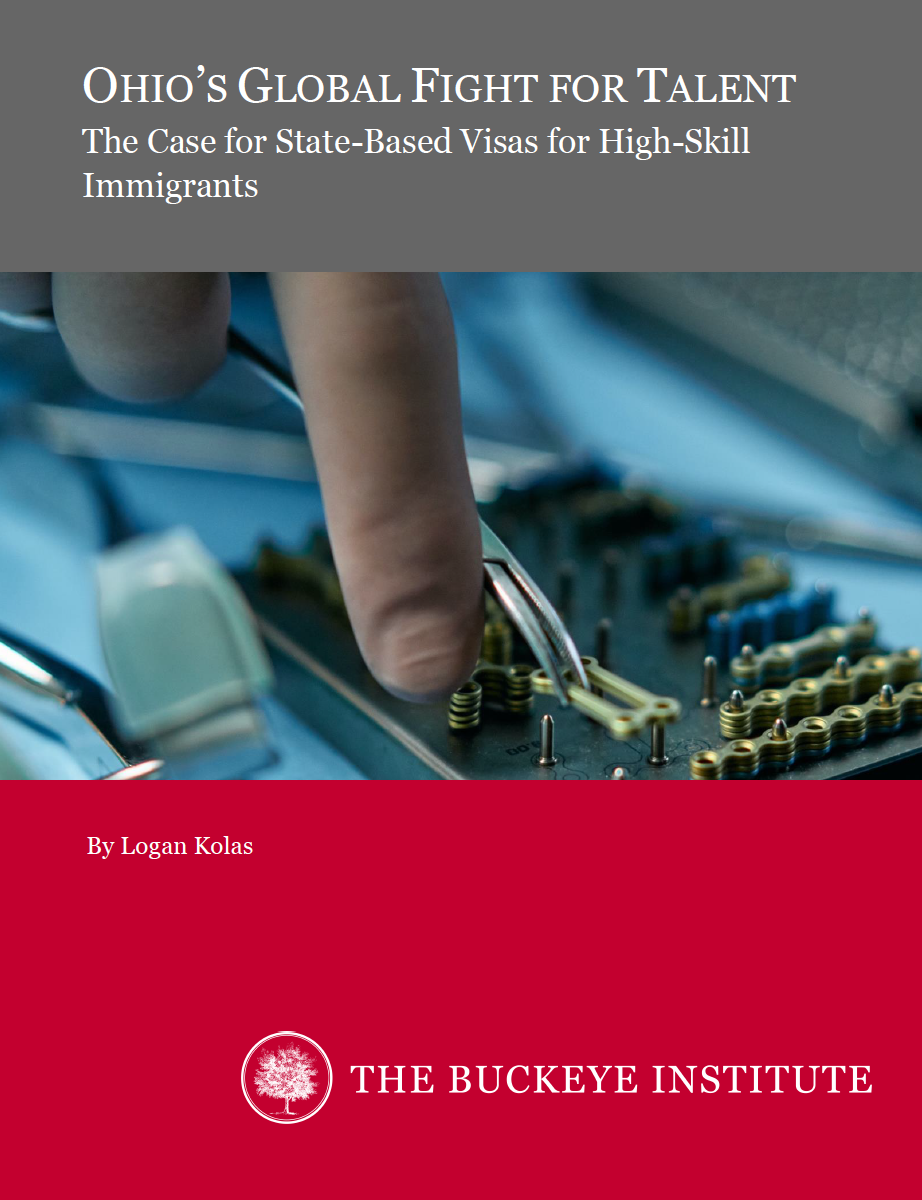The Buckeye Institute Offers Tangible Solutions for Ohio’s High-Skilled Worker Shortage
Jun 07, 2023Columbus, OH – On Wednesday, The Buckeye Institute released its timely brand new report, Ohio’s Global Fight for Talent: The Case for State-Based Visas for High-Skill Immigrants, which demonstrates how a well-designed state-based visa program for high-skilled legal immigration would address urgent problems in the Buckeye State’s job market. This latest report is a companion to Buckeye’s previously-published Modernizing Ohio’s Policies to Seize New Economic Opportunities, which offers concrete public policy solutions on how to upskill and reskill Ohio’s workers for the modern economy while simultaneously addressing critical labor shortages. Together, the two reports provide state and federal policymakers a comprehensive road map to ensure Ohio’s workers and economy both thrive in the 21st century.
“Having highly skilled workers to fill the jobs that Intel and other companies are creating in Ohio is critical,” said Governor Mike DeWine. “This report by The Buckeye Institute offers practical solutions to attracting highly-skilled, legal immigrants to help Ohio fill the jobs of the future.”
“Intel’s recent decision to invest $20 billion in state-of-the-art semiconductor plants in Ohio has drawn national attention to the Buckeye State’s critical high-skilled worker shortage,” said report author Logan Kolas, an economic policy analyst with the Economic Research Center at The Buckeye Institute. “By adopting a comprehensive approach of upskilling and reskilling Ohio’s workers and simultaneously attracting qualified and highly skilled immigrants to Ohio, state and federal policymakers can ensure Ohio has the workers needed to fill jobs—particularly in national security-sensitive industries.”
In the report, Kolas outlines the complex challenges facing Ohio due to population decline, noting that “[t]wo-thirds of Ohio counties have lost population over the last decade; and in 2021, total population in Ohio actually declined.” Given those trends, Kolas underscores that “attracting workers from other states along with foreign immigrants is imperative for sustaining the state’s population and promoting economic growth.”
“In Ohio, we are creating jobs faster than we can find people to fill them,” said Lt. Governor Jon Husted. “Employers still can’t fill all of the jobs they are creating even though every Ohioan who wants to work has access to in-demand credentials through their local career centers, Ohio Means Jobs Centers, or with TechCred and IMAP. To continue to grow our economy, it’s important we consider all avenues for solving the workforce shortage. Recruiting talent to Ohio is another approach we should leverage to strengthen Ohio’s overall workforce development strategy.”
Increasing high-skilled immigration reinforces what made Ohio successful at enticing businesses in the past: a large talent pool of workers. In 1979, Honda’s arrival “helped attract more people, more commerce, and more employers” to the state. Honda now employs 4,700 people in Marysville and 15,000 people across Ohio, and has yet to lay off a single employee.
The Buckeye Institute knows that right now is the time to adopt sensible policies that catalyze Ohio’s rightful place as the leader in the ongoing transformation of the Midwest from its rust belt roots into the Silicon Heartland. And we can do so quickly by following the roadmap of truly innovative and relevant policies this report outlines:
# # #

